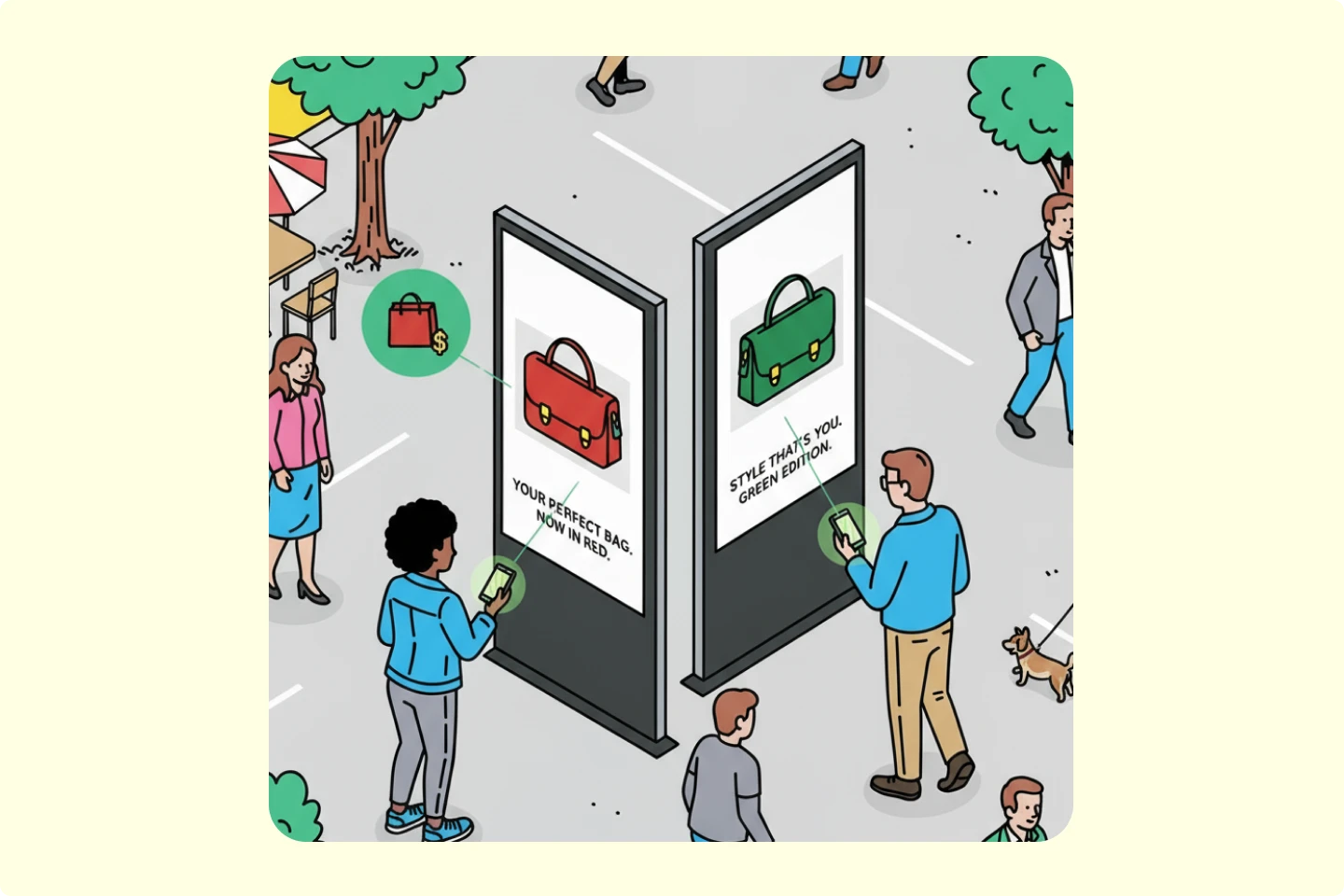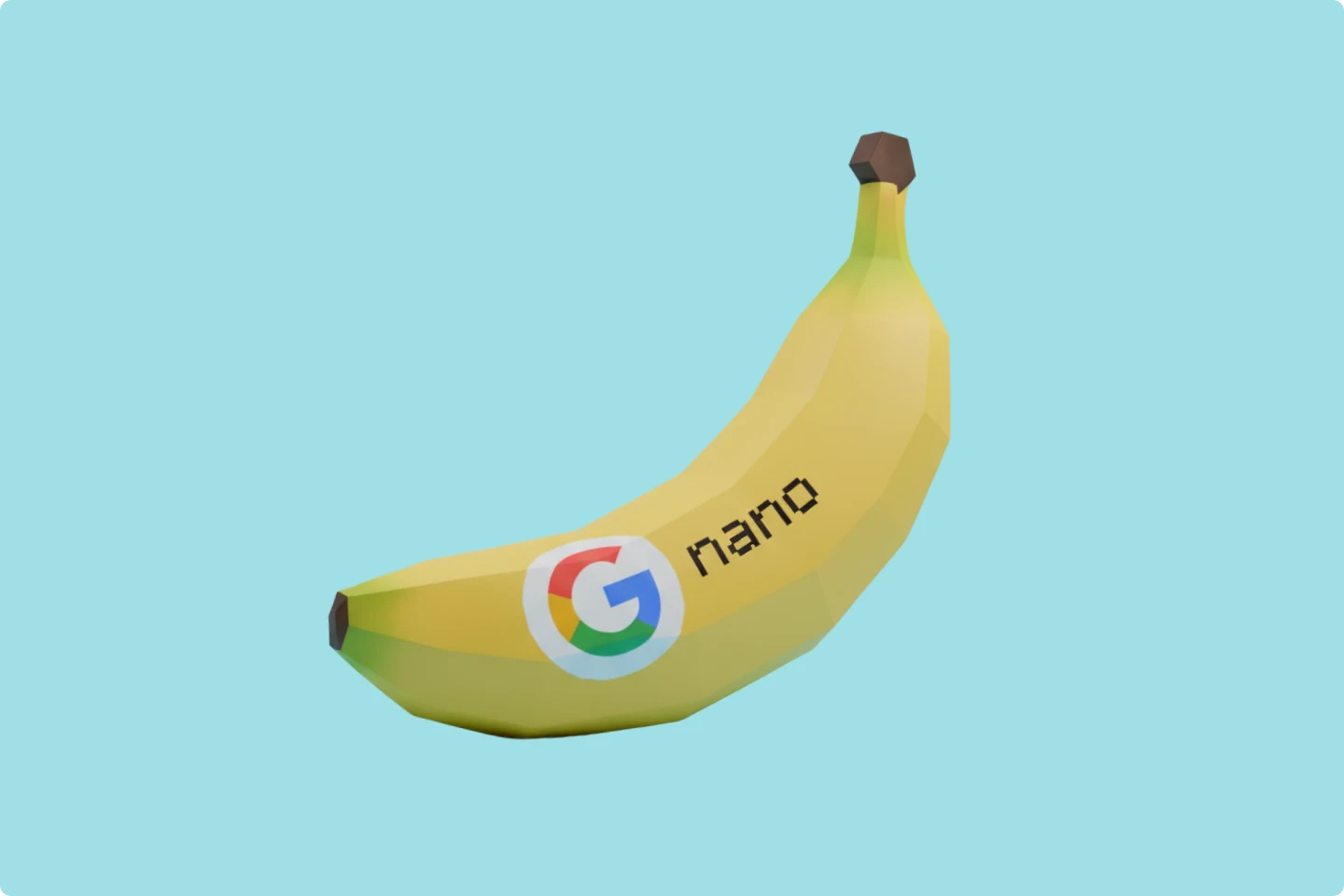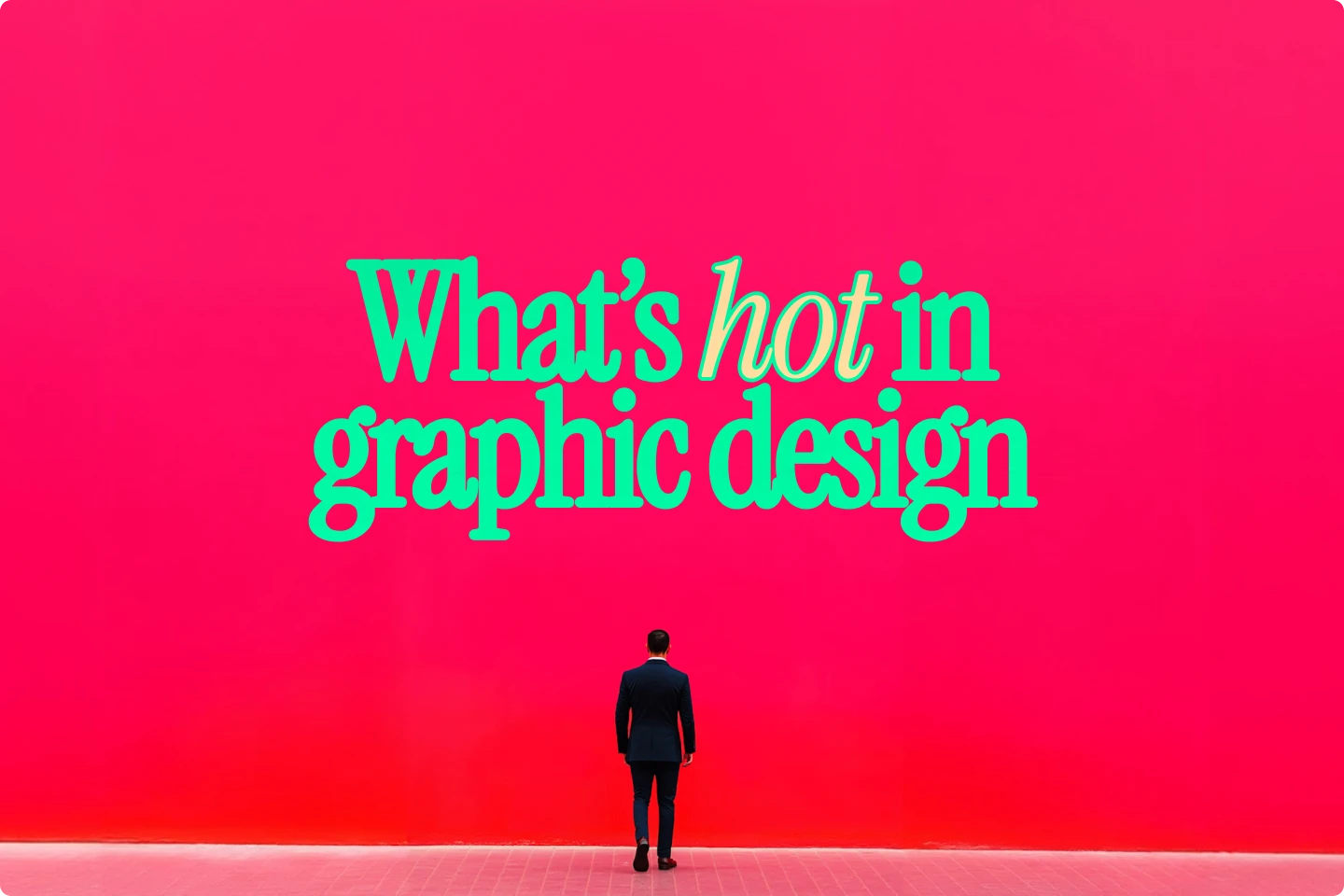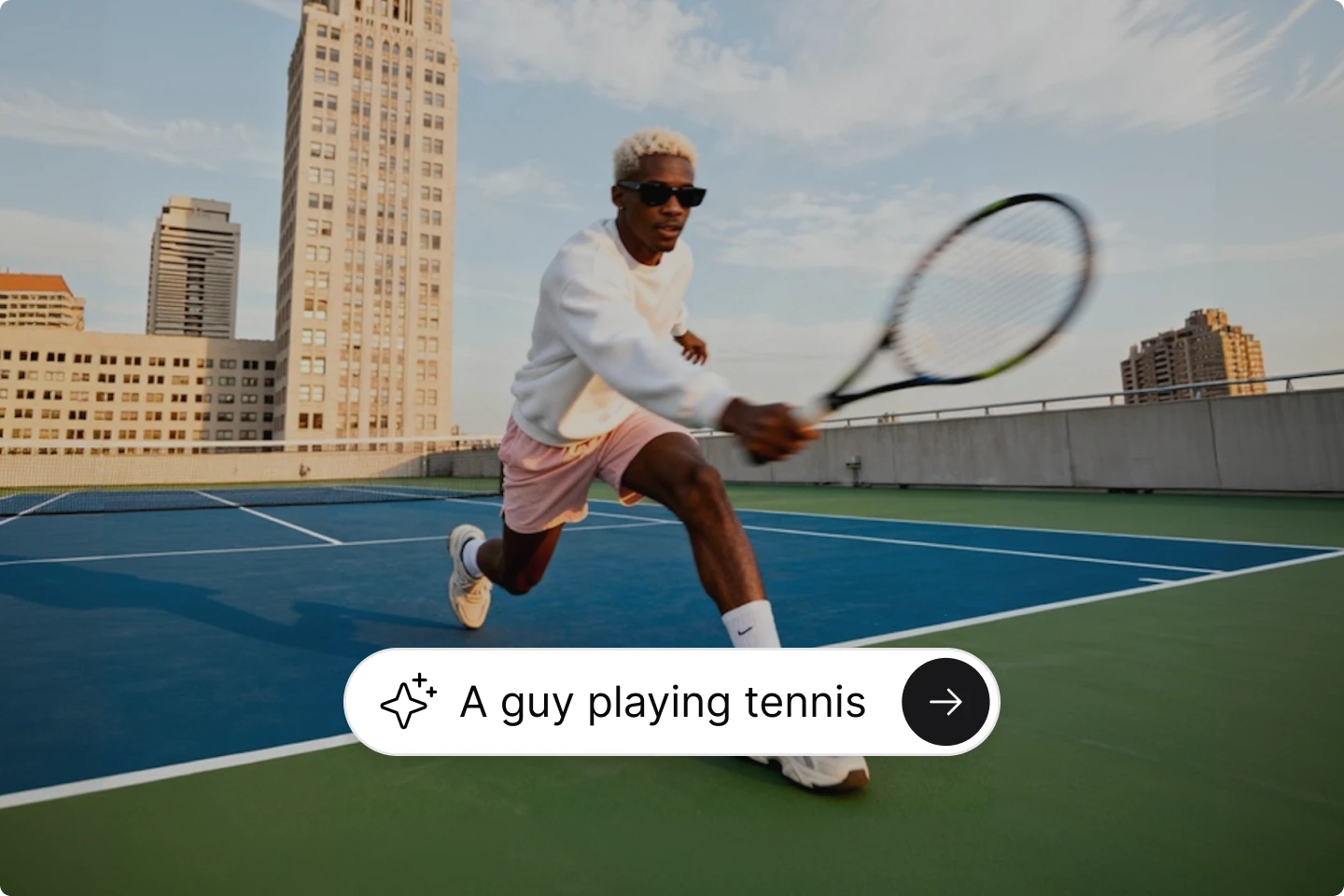The age of hyper-personalization: A guide for designers


In a world increasingly shaped by AI, algorithms, data, and real-time decision-making, the idea of what “personalization” means is changing.
That’s because we've entered the age of hyper-personalization, a time when every interaction, experience, and design choice can (and should) be tailored to the individual.
But, from the context of design, what does hyper-personalization actually mean? And more importantly, what does it signal for the future of design, storytelling, and branding?
This guide is for designers, creatives, and visual storytellers navigating the shifting landscape of AI, data, and digital experiences.
Whether you're designing a product interface, using AI to build a brand campaign, or crafting a portfolio site, understanding what hyper-personalization is only going to get more important.
What is hyper-personalization?
Hyper-personalization is the next stage in the evolution of personalization. In the early stages of traditional personalization, this method often stopped at the surface level.
Customers might receive an email that includes their first name, or they might be shown product recommendations based only on their past purchases. That approach still works, but it no longer feels fresh or engaging.
A hyper personalized experience goes much further. By combining artificial intelligence, machine learning (ML), and real-time data, businesses can deliver experiences that shift moment by moment. Instead of serving a static recommendation, the system adapts instantly to a customer’s unique situation and needs.
A traditional personalization strategy might say, “Hey, Sarah! We believe you will like this.” A hyper personalized interaction goes deeper.
It becomes, “Hi Sarah, based on your recent browsing, the time of day, and the weather in your city, here’s something you’ll love right now.” This level of relevance makes the experience feel more human and intuitive.
For designers, this is an important shift. You are no longer simply building interfaces or producing one-off assets. You are helping shape personalized interactions that shift and change in real time.
The job now is to design systems that adapt gracefully, stay visually consistent, and always feel authentic to the brand, no matter how the content evolves.
The design skills that matter in a hyper-personalized world
To thrive in the age of hyper-personalization, designers must evolve beyond static layouts and fixed templates. The role now demands adaptability, collaboration, and a clear understanding of how design connects with data and technology. The most valuable skills fall into a few key areas:
Systems thinking: Every component is part of a larger ecosystem of data flows and personalization platforms. Designers need to think beyond the canvas and anticipate how their work shifts inside a dynamic system.
Design ethics and inclusion: Personalization without consent feels intrusive. Designers must advocate for AI ethics, transparency, fairness, and inclusive practices to keep users’ trust.
Content modularity: Flexibility is essential when it comes to the world of hyper-personalization. Instead of rigid pages, create templates that support interchangeable content such as dynamic headlines, CTAs, or images. The design must stay consistent even as content changes.
Balancing automation and creativity: Automation removes repetitive tasks, allowing designers to focus on strategy and storytelling. This shift makes space for more creative direction, testing, and guiding the emotional tone of brand experiences.
At its core, design is still about storytelling. The tools may evolve, but the mission remains: create meaningful, relevant, and human connections.
How to start designing for hyper-personalization
If you are just beginning to design for hyper-personalization, the process can feel intimidating. The good news is that you do not need to completely reinvent how you work. The shift happens by rethinking small steps in your design process and focusing on adaptability.
Here are five areas that will help you build confidence as you move into this new era of design.
Audit your current workflows
Start by looking at how you design today. Where are you still building for an "average user"? In many cases, teams rely on broad personas, but hyper-personalization requires more flexibility.
Instead of static templates, think about ways your components could adapt to multiple contexts. A simple audit will reveal areas where a modular approach would make more sense than a fixed layout. This step is not about discarding what already works. It is about discovering opportunities to make your process more adaptable.
Collaborate cross-functionally
Designers cannot drive hyper-personalization on their own. Success requires partnership with marketing, product, engineering, and especially data teams. These groups manage the insights that fuel personalization, such as analytics, customer data, and technical capabilities.
Working together helps you understand what is available and what can be applied ethically. Collaboration also ensures that creative ideas are realistic and supported by the right data.
Prototype personalization
Once you have context, start experimenting. Generative AI tools like AI allow you to quickly build different versions of the same content. Try creating multiple layouts that adjust tone, imagery, or hierarchy depending on user needs.
Even if these variations never go live, the exercise is valuable. Prototypes help your team visualize what adaptive design can look like. They also make it easier to test with different user groups and gather feedback before committing to development.
Build design systems for flexibility
A rigid design system will not support hyper personalization effectively. What you need is a modular system that adapts to different types of content and user scenarios.
Think about a color palette that can expand across contexts, typography rules that remain consistent even when headlines vary in length, and buttons that stay recognizable even when CTAs change. Flexible systems reduce the risk of inconsistency and allow personalization to scale across multiple experiences.
Always keep the human at the center
Hyper-personalization should always feel like an enhancement, not an intrusion. As a designer, you play the role of protecting the human experience.
Ask yourself: is this helpful or is it manipulative? The best personalization empowers users with clarity and relevance. It avoids overwhelming them or making them feel as though they are being watched too closely.
When handled with transparency, personalization builds trust and loyalty, and as you can see above, can even be based on a comical approach. When handled poorly, it leads to frustration and disengagement.
What hyper-personalization means for brand identity
One of the biggest challenges in this new era is figuring out how to maintain a consistent brand identity when every user’s experience is different. If every website, app, or campaign changes based on context, how can a brand still feel unified?
The answer lies in building systems that are flexible enough to adapt, yet structured enough to stay recognizable. Many brands are now investing in design language systems that include tokens, typography rules, and modular color palettes. These frameworks allow for variation without losing the core brand essence.
Another strategy is behavioral branding. Instead of focusing only on how a brand looks, companies are defining how it should behave in different situations.
This approach ensures that even when the visuals shift, the experience still feels on-brand because the behavior is consistent.
Some teams are also creating personalized storytelling frameworks. Think of these as flexible narratives where individual pieces can change depending on the audience.
Just like a story with interchangeable parts, different components fit together to form a coherent brand message, tailored to each person while still reflecting the same identity.
The future of design is granular
hyper-personalization is fundamentally changing how digital products, websites, ads, graphic design trends, and even physical experiences are being designed.
This new era of content, marketing, and design shows that creatives are on the frontlines of this shift.
Many see it as a shift of designing for a user-persona, to designing more millions of micro interactions. This type of granularity is ushering in a new way of thinking.
We're moving toward a world where every user expects every experience to feel tailored just for them. As a creative, this is both a challenge and an opportunity.
hyper-personalization is about amplifying creativity with intelligence and intention.
Nano Banana: Lummi's latest image model


.webp)



